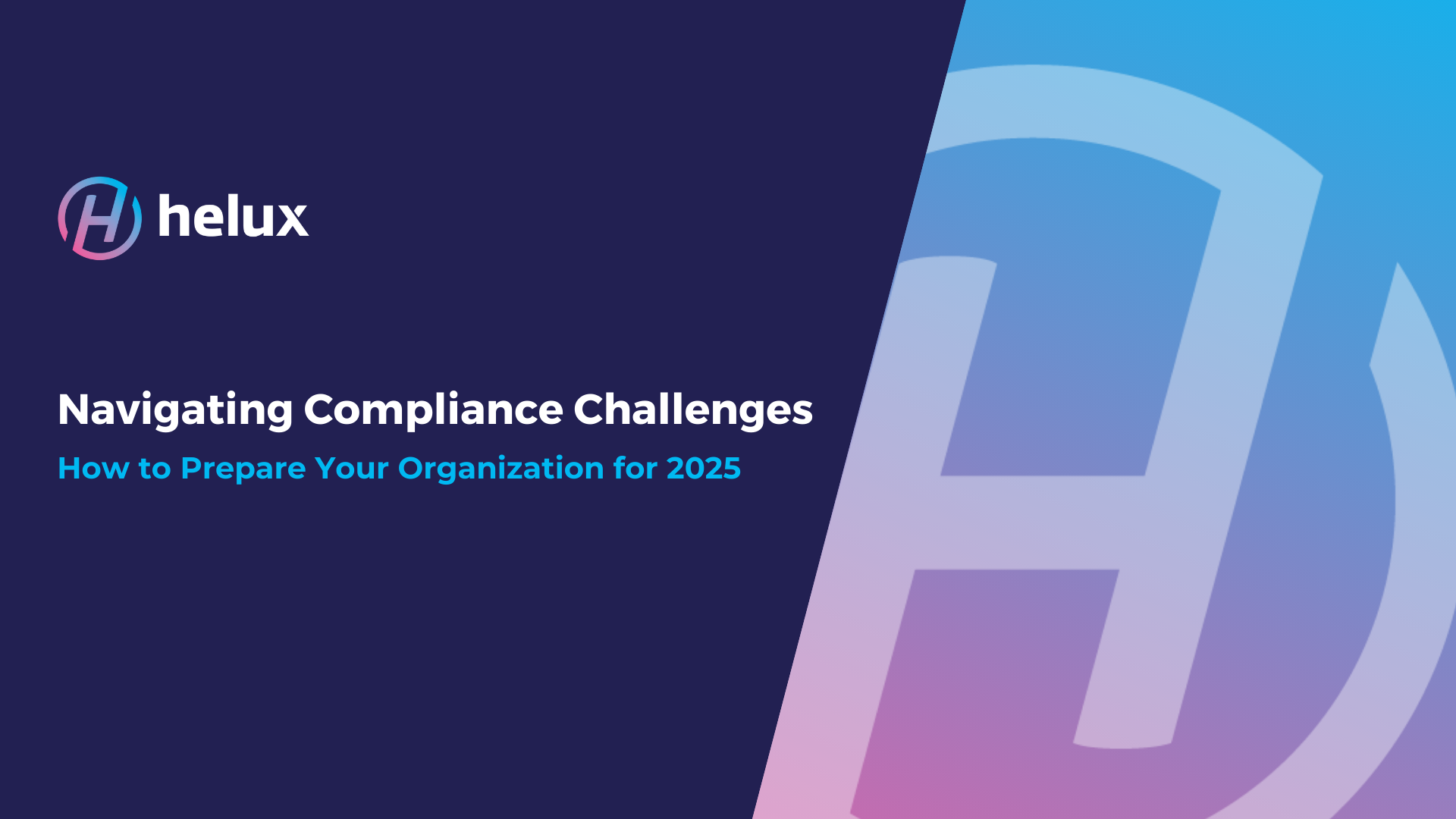Navigating Compliance Challenges: How to Prepare Your Organization for 2025
As we approach 2025, organizations must prepare for an evolving compliance landscape characterized by increasing regulations and heightened scrutiny. Compliance is not just a checkbox; it is essential for building trust with stakeholders, protecting your organization’s reputation, and mitigating risks. To successfully navigate the complexities of compliance in the coming year, organizations must adopt proactive strategies and robust frameworks. Here are key steps to set up your organization for compliance in 2025.
Conduct a Comprehensive Compliance Assessment
Before implementing new compliance measures, it is crucial to understand your organization’s current compliance status. Conduct a thorough compliance assessment to identify existing gaps, risks, and vulnerabilities. This assessment should include:
-
Reviewing Current Policies: Evaluate your existing compliance policies and procedures to ensure they align with current regulations.
-
Identifying Regulatory Requirements: Stay informed about upcoming regulations that may impact your industry, including data protection laws, industry-specific regulations, and international compliance standards.
-
Analyzing Past Compliance Issues: Review any past compliance violations or challenges your organization faced to understand where improvements are needed.
This comprehensive assessment will provide a clear understanding of where your organization stands and help inform your compliance strategy moving forward.
Develop a Robust Compliance Framework
A strong compliance framework is essential for establishing clear policies, procedures, and responsibilities within your organization. Your compliance framework should include:
-
Policies and Procedures: Create or update written policies and procedures that clearly outline compliance expectations and protocols for employees at all levels.
-
Risk Management Plan: Develop a risk management plan that identifies potential compliance risks and outlines strategies for mitigating them.
-
Governance Structure: Establish a governance structure that designates compliance roles and responsibilities, ensuring accountability at all levels of the organization.
By implementing a robust compliance framework, you create a strong foundation for managing compliance effectively in 2025.
Invest in Compliance Training and Education
Employee training and education are critical components of any compliance strategy. To ensure that all employees understand their responsibilities regarding compliance, consider the following:
-
Comprehensive Training Programs: Develop training programs that cover key compliance topics relevant to your organization, including data privacy, regulatory requirements, and ethical conduct.
-
Regular Refresher Courses: Schedule regular refresher courses to keep employees updated on any changes in regulations and compliance policies.
-
Encouraging a Compliance Culture: Foster a culture of compliance within your organization by emphasizing the importance of compliance and encouraging open communication about compliance concerns.
Investing in compliance training helps create a knowledgeable workforce that is better equipped to navigate compliance challenges.
Leverage Technology for Compliance Management
In today’s digital landscape, technology plays a vital role in streamlining compliance management. Consider implementing compliance management software and tools to automate and enhance your compliance efforts. Key benefits of leveraging technology include:
-
Automated Monitoring: Use automated tools to monitor compliance with regulations in real-time, allowing for quick identification and resolution of potential issues.
-
Document Management: Implement document management solutions that help organize and track compliance-related documents, making it easier to demonstrate compliance during audits.
-
Data Analytics: Leverage data analytics to assess compliance performance, identify trends, and make informed decisions about your compliance strategy.
By integrating technology into your compliance efforts, you can increase efficiency and reduce the risk of non-compliance.
Establish Clear Communication Channels
Effective communication is vital for ensuring that compliance policies and expectations are understood and followed throughout the organization. Consider the following strategies to enhance communication:-
Regular Updates: Provide regular updates on compliance matters, including changes in regulations and policies, through newsletters, meetings, or internal communications platforms.
-
Open-Door Policy: Encourage employees to ask questions and report compliance concerns without fear of retaliation. An open-door policy fosters trust and encourages a proactive approach to compliance.
-
Cross-Departmental Collaboration: Promote collaboration between departments to ensure that compliance efforts are integrated across the organization, especially in areas like finance, HR, and IT.
By establishing clear communication channels, you can ensure that compliance remains a priority across all levels of your organization.
Monitor and Audit Compliance Efforts
Regular monitoring and auditing are essential to assess the effectiveness of your compliance strategy. Implement the following practices:
-
Conduct Regular Audits: Schedule periodic compliance audits to evaluate adherence to compliance policies and identify areas for improvement.
-
Use Metrics to Measure Compliance: Develop key performance indicators (KPIs) to measure compliance performance and track progress over time.
-
Respond to Findings: When compliance issues are identified, take immediate action to address them and adjust your compliance strategy as needed.
Ongoing monitoring and auditing will help you stay proactive and ensure that your organization remains compliant as regulations evolve.
Stay Informed About Regulatory Changes
The regulatory landscape is constantly changing, and staying informed is essential for maintaining compliance. Subscribe to industry publications, join professional organizations, and participate in webinars to stay updated on regulatory changes that may affect your organization. Additionally, consider forming a compliance task force that regularly reviews and analyzes regulatory developments.
By keeping abreast of regulatory changes, you can adapt your compliance strategies proactively, ensuring your organization remains compliant in 2025 and beyond.
Building a Strong Compliance Culture: Strategies for Success in 2025
Setting up your organization for compliance in 2025 requires a proactive, strategic approach. By conducting a comprehensive compliance assessment, developing a robust compliance framework, investing in training, leveraging technology, and maintaining clear communication, your organization can effectively navigate the evolving compliance landscape. Regular monitoring and staying informed about regulatory changes will further ensure that your organization remains compliant and prepared for the future.
With the right strategies in place, your organization can build a strong compliance culture that not only mitigates risks but also enhances overall business performance.

